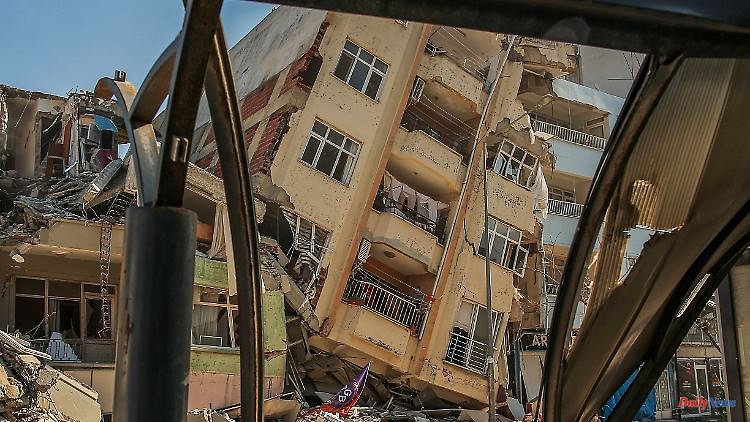Turkey has had more than 9,000 aftershocks since the devastating tremors in early February. This time, a 5.2 magnitude earthquake shook Nigde province. There are no reports of victims yet. Meanwhile, more than 100 people are arrested - because of construction defects.
The earthquake region on the border between Turkey and Syria does not come to rest. An earthquake measuring 5.2 has now hit the central Anatolian province of Nigde in Turkey, according to the Kandilli earthquake monitor. The epicenter was therefore in the district of Bor. Shortly before, according to the Turkish civil protection authority AFAD, there had been several earthquakes of magnitude 4. There is no information on casualties or damage.
A total of more than 60 aftershocks were recorded by Syrian locations within 24 hours, according to the country's earthquake center. The phase of the aftershocks could last another two years, it was said by AFAD. On February 6, two earthquakes of magnitude 7.7 and 7.6 shook southeast Turkey and northwest Syria. According to Turkish information, this was followed by more than 9,000 aftershocks.
The number of confirmed fatalities in the two countries has now risen to more than 50,000. This number is a warning for Istanbul: Experts consider an earthquake there with a magnitude of up to 7.4 to be overdue. Istanbul Mayor Ekrem Imamoglu said a rapid construction program worth around 30 to 40 billion dollars is needed to improve earthquake safety. "The amount is three times the annual budget of the city of Istanbul, but we have to be ready before it's too late." Almost 100 school buildings had recently been closed due to construction risks, which are now to be made earthquake-proof.
The Istanbul region is part of the North Anatolian Fault System, a large tectonic plate boundary known for destructive earthquakes with many casualties. According to official figures, 16 million people live in the megacity, according to unofficial estimates even 20 million. There are around 1.6 million old buildings that are not earthquake-proof, Nusret Suna from the Istanbul Chamber of Civil Engineers said recently.
The authorities had failed to renovate old houses earthquake-proof, Suna had criticized. And even buildings built after 1999 are often not safe, despite the regulations that have been in force since then, because they are often disregarded out of greed for profit. A strong earthquake in Istanbul could have catastrophic consequences.
Meanwhile, Turkey's Justice Minister Bekir Bozdag said at least 184 people had been arrested on suspicion of negligence in relation to buildings collapsed in the earthquake. A number of buildings in the affected region in the south-east of the country were not built to be earthquake-proof. Criticism was raised that compliance with applicable building standards was often not checked. Countless buildings had not withstood the devastating earthquakes of early February. According to the Turkish government, more than 173,000 buildings were destroyed in 11 provinces of the country. Almost two million people lost their homes.












